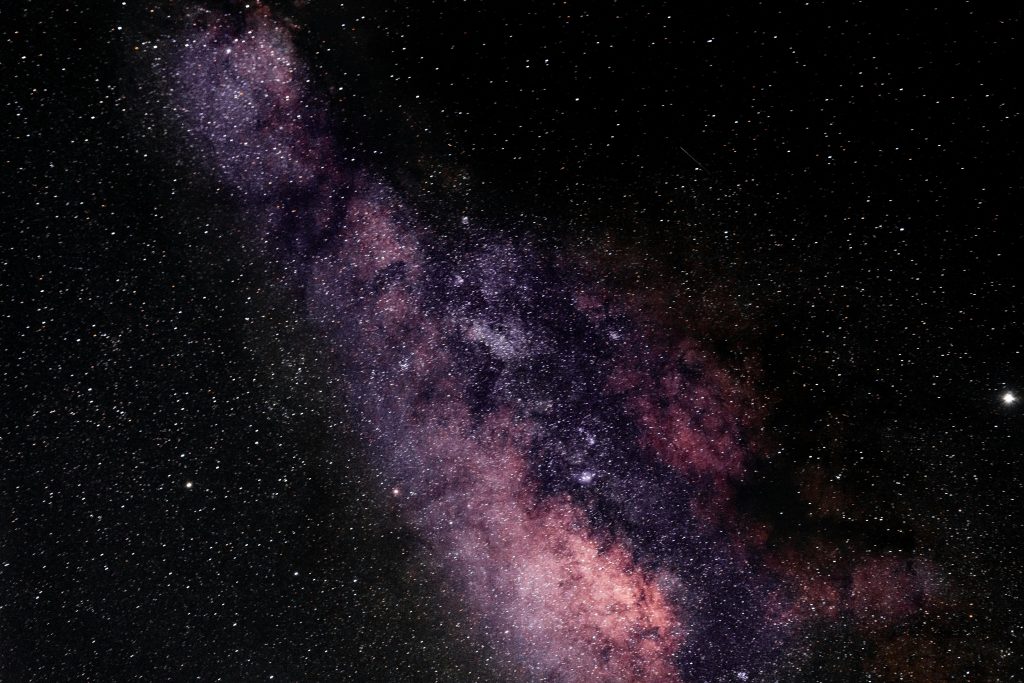When we went into space and landed on the Moon, it was a revolutionary time for the United States. Yet over the years, we have seen more people go into space. Many have reported the issue of flashing lights, but no one was sure why this happened. It was widely thought to be due to a form of cosmic rays.
On May 12, 1973…newswires claimed that “light flashes [were] no danger for short space flights.”
It is probably key to point out the word “short” in the space flight concept here. Meaning, if you stay in space longer than a short time period, you could possibly experience problems. Today, we’re positive that flashing light issues are happening. We just didn’t know the real reason they occurred.
In fact, light flashes and streaks seen by the Apollo crew were attributed to a form of cosmic radiation known as high-energy, heavy cosmic particles (or HZEs) passing through the eyes. These HZE ions are high-energy nuclei components of galactic cosmic rays or GCRs, which have an electric charge of +3e or greater.
Basically, the nuclei of elements are heavier than hydrogen or helium. This is where the abbreviation of HZE comes from. High (H), atomic number (Z), and energy (E).
It was widely assumed that the particles would not be a serious hazard for short trips to the Moon or even Earth-orbital missions. Yet that might not be accurate.
Plus, while cosmic rays were thought to be the main reason for the flashing lights, now scientists are not so sure.
Cosmic Rays & Flashing Lights

Apollo astronauts described light flashes in a way that still remains a real mystery. We thought cosmic rays or a form of cosmic radiation were to blame for obvious reasons. We know these lights pass through and we know even that the Van Allen radiation belt is nearby.
Plus, we know that once you exit Earth’s orbit, you can easily come across cosmic rays. Yet this does not automatically mean that one will come across them nor that they are the “true” reason for flashing lights.
It’s thought that particles, which are components of cosmic rays, emit radiation as they pass through the eyes. It very well could be that they simply trick nerve cells to create the illusion of light. Regardless of why they happen, they are a problem for astronauts.
Not only could these light flashes cause problems for astronauts during their work process in space. They could also possibly cause problems with eyesight long-term.
Long-Term Health Of Astronauts

By 2006, at least 80% of all astronauts working for NASA and the European Space Agency reported experiencing flashes of light in space. How this impacts astronaut health long-term is unknown. The light they experience could affect them weeks, months, or years after they come back to Earth.
As of now, there have not been any major long-term side effects directly from the flashing lights known. The real issue for us is determining how this will affect people on future deep space missions. It’s also a real worry for planned missions to both the Moon & Mars.
It is thought that some form of radiation is causing the problem. This is why NASA has been coming up with new ways to protect astronauts from the radiation they’d experience. One thing they have managed to come up with is a portable magnetic shield, which can deflect cosmic rays.
If these are truly to blame for the flashing lights, then the use of this shield will certainly prove that. There are many questions that come out of this. Such as wondering if this will be a big asset on Mars compared to the Moon for astronauts. Along with if NASA will make these shields for the ISS or future spacecraft.
References:
50 years ago, cosmic rays may have caused Apollo astronauts to see lights